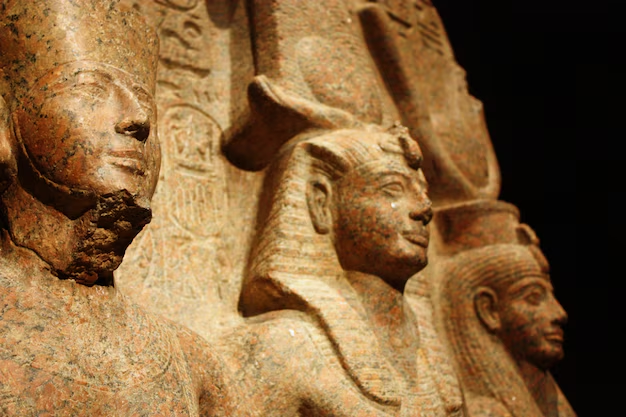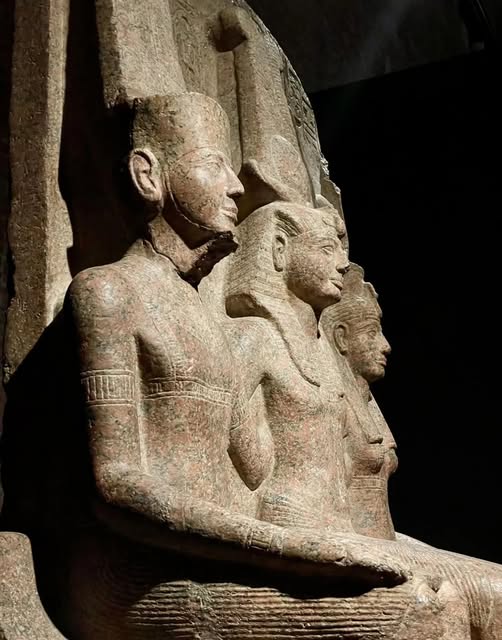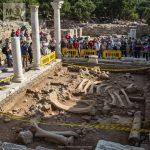The statue of Ramesses II with Amun and Hathor

Period: New Kingdom, 19th Dynasty (Reign of Ramses II, 1279–1213 B.C.)
Material: Stone
Origin: Egypt
This remarkable triad statue depicts Pharaoh Ramses II seated between the god Amun and the goddess Mut, the divine couple of Thebes. Traditionally, triads also include their son Khonsu, though here the focus is on the intimate connection between the pharaoh and the gods.

The statue of Ramesses II with Amun and Hathor is housed in the Museo Egizio, Turin. Ramesses II (c. 1303–1213 BCE), widely known as “Ramesses the Great,” is one of Egypt’s most renowned pharaohs. To the ancient Egyptians, he was called Userma’atre Setepenre, meaning “Keeper of Harmony and Balance, Strong in Right, Elect of Ra.”

He ruled as the third pharaoh of the Nineteenth Dynasty, reigning for an impressive sixty-eight years. His long reign meant that nearly all his subjects had only ever known him as pharaoh, leading to fears that the world might end upon his death. Ramses II, whose mummy indicates he stood over six feet tall, had over 200 wives and concubines and fathered 156 children.

Ramses II is remembered as a formidable warrior, notably for his role in the Battle of Kadesh against the Hittites. While Ramses II claimed victory, the Hittite king, Muwatalli II, asserted that his side had won. Despite the disputed outcome, the battle ultimately led to the signing of the world’s first known peace treaty between Ramses II and Hattusili III, Muwatalli’s successor.

Ramses II left a monumental architectural legacy. He constructed the temples at Abu Simbel, the Karnak hall, the complex at Abydos, the Ramesseum tomb complex at Thebes, and hundreds of other buildings, temples, and monuments. Many historians regard his reign as a golden age of Egyptian art and culture. The tomb of his first wife and favorite queen, Nefertari, remains remarkably beautiful even thousands of years later.

Amun, god of the air, was one of Egypt’s eight primordial deities. Over time, his role evolved: by the Middle Kingdom, he became the King of the Gods, and in the New Kingdom, he became a nationally worshipped deity. Eventually, Amun merged with Ra, the sun god, becoming Amun-Ra. Amun was believed to have created himself and all else in the universe but remained distant as the “original inscrutable and indivisible creator.” When merged with Ra, he became both a visible and invisible deity, reflecting the Egyptian concept of Ma’at, or balance. Amun was depicted in various forms, including as a goose, snake, ram, or as a man with the head of a ram, frog, cobra, crocodile, or ape.
Amun-Ra was considered the father and protector of the pharaoh and was the focus of a widespread cult. Royal women had significant roles within this cult: Queen Nefertari held the title “God’s Wife of Amun,” while Pharaoh Hatshepsut claimed her right to rule because her mother had been impregnated by Amun, establishing divine legitimacy.
Hathor was one of Egypt’s forty-two state gods and one of the most popular and powerful deities. She was the goddess of love, beauty, music, dance, fertility, and pleasure, and the protector of women, though men also worshipped her. Hathor’s temples were served by both priests and priestesses, reflecting her wide influence in Egyptian religious life.











